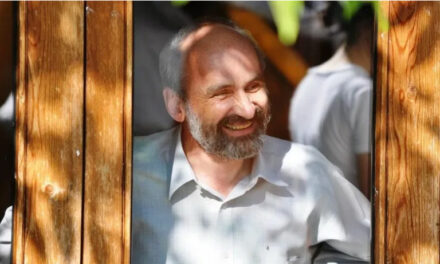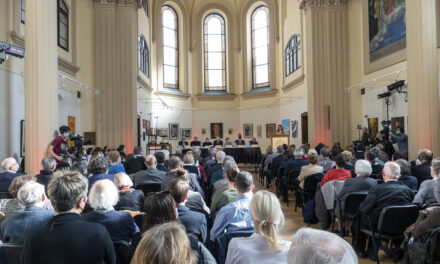Anyone who took to Twitter before Easter could see a funny photo of Pope Francis in a super-modern puffer jacket. Or maybe not?
Pablo Xavier, a 31-year-old American construction worker living near Chicago, went home from work on the evening of Friday, March 24, 2023, and then, happy that the weekend was starting, he ate a small magic mushroom. He didn't want to solve the secret of the Universe with the help of the psychedelic creature, which some call a teacher: according to his own admission, he just wanted to feel funny after a tiring week spent at work.
Since Pablo Xavier has been clicking on the AI-based image generation program called Midjourney , he did with the pope exactly what millions of people are having fun with on the Internet these days: he asked the program to generate pictures of a famous person in funny situations. Maybe because the weather around Chicago is also strange, sometimes it even snows, he asked the program for things like
"the Pope should walk around Rome in a Balenciaga or Moncler puffer jacket".
The result speaks for itself, and for a short time most of the world believed that the pictures were real.

Source: Twitter/Midjourney
But now that we know it's a fake, we have to resist the temptation to shrug it off as just an innocent joke; and we must see it for what it is: a fraud with unforeseeable consequences, a byproduct of a worrying trend in which the power of artificial intelligence (AI) is growing exponentially.
Machine learning, a branch of artificial intelligence, accumulates more and more information from the Internet. Algorithms and statistical models aggregate and analyze this data to produce increasingly complex patterns from which computer systems draw certain conclusions. This process takes place without human programmers to provide the system with clear instructions; the system essentially learns how to learn from itself.
As Melissa Heikkilä writes in her December 2022 article in the MIT Technology Review :
“Massive language models were trained on datasets based on text scraped from the Internet, including all the toxic, stupid, fake, and malicious writings that people put together online. Ready-made artificial intelligence models feed back these untruths as fact, and their end product can be found everywhere in the online world.”
Misinformation, whether accidental or intentional, can lead to injury or death, mislead people, and even perpetuate gender, racial, and other types of prejudice. The image of Pope Francis in a puffer jacket, for example, also conveys the hidden, subconscious message that he, and through him the entire Catholic Church, accepts and adopts the consumer culture, the pursuit of fame and other worldly values that are opposed to Christian teachings, and all this is precisely one of the It is a holiday of great importance for the Church, on the occasion of Easter.
Even if people know in their minds that the photo was a fake, they can't forget the sight. Especially if they adapt the idea even into a TikTok video...
@carlomunar Francis Dancin' Made with AI #midjourney #midjourneyart #midjourneyai #aigeneratedart #midjourneyarchitecture #artificialintelligence #ai #machinelearning #mdcommunity #modernart #papafrancesco #popefrancis #papfrancisco #dance #tiktokdance
Another area of concern is plagiarism and copyright and intellectual property violations. For example, teachers are unsure how to control the phenomenon that students are increasingly using the ChatGPT chatbot to write their papers.
According to the March 2023 Best Colleges survey, one fifth of American students surveyed use artificial intelligence tools, such as ChatGPT, to prepare a paper.
This type of cheating prevents the development of critical thinking, reasoning, planning and communication skills.
Sources: katolikus.ma, 444
Featured image: Twitter/Midjourney











